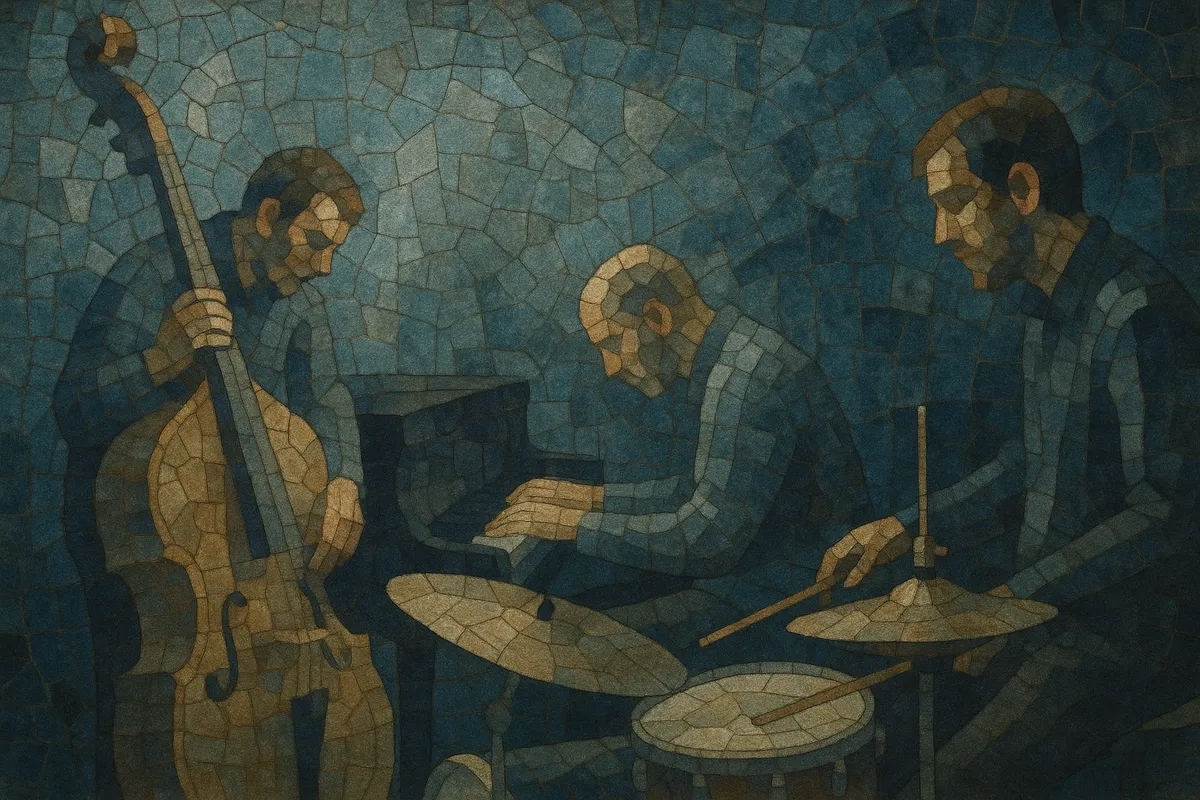ECM style jazz refers to the spacious, lyrical, and meticulously recorded jazz aesthetic associated with the German label ECM (Edition of Contemporary Music), founded by Manfred Eicher in 1969. Rather than a strict subgenre, it is an identifiable sound and approach: crystalline production, wide dynamic range, and a reverence for silence and resonance.
Hallmarks include modal or static harmonies, patient melodic development, chamber-like interplay, brushed or textural percussion, and a preference for straight-eighth feels over hard swing. The sound often blends European classical and contemporary minimalism with folk inflections and global timbres, yielding an atmosphere that is contemplative, luminous, and intimate—encapsulated by ECM’s motto: “the most beautiful sound next to silence.”
Many quintessential recordings were made at Oslo’s Rainbow Studio with engineer Jan Erik Kongshaug, whose natural room acoustics and transparent reverb became part of the ECM signature.
ECM was founded in Munich in 1969 by Manfred Eicher, quickly establishing a distinctive production ethos: acoustic clarity, judicious reverb, and patience in pacing. Early releases by Keith Jarrett (Facing You, 1971; The Köln Concert, 1975), Jan Garbarek, Terje Rypdal, and Eberhard Weber defined a European jazz sensibility—less blues-driven and more modal, melodic, and atmospheric. The Oslo/Jan Erik Kongshaug engineering partnership helped codify the label’s luminous, airy sound.
In 1984 ECM launched the New Series, foregrounding contemporary and early classical music (notably Arvo Pärt’s Tabula Rasa), reinforcing the label’s chamber aesthetic and deepening ties between jazz, minimalism, and sacred/early music. Jazz artists such as Ralph Towner, John Abercrombie, Kenny Wheeler, and Tomasz Stańko broadened the palette, while figures like Egberto Gismonti brought Brazilian and wider world influences into the fold.
Through the 1990s and 2000s, ECM style jazz maintained its identity while expanding geographically and stylistically, featuring artists from Scandinavia, Central/Eastern Europe, and beyond. The repertoire emphasized melody, timbral nuance, and ensemble listening over virtuosic display, often favoring straight-eighth grooves, odd meters played softly, and modal harmony enriched by folk coloration.
The ECM aesthetic shaped what many consider the modern European jazz sound—chamber-like, lyrical, and spacious. Its production values influenced contemporary jazz, post-classical composition, and ambient-leaning practices. The label’s integration of global idioms helped normalize world-informed jazz, and its emphasis on silence, room sound, and narrative pacing remains a reference point for producers and improvisers worldwide.


